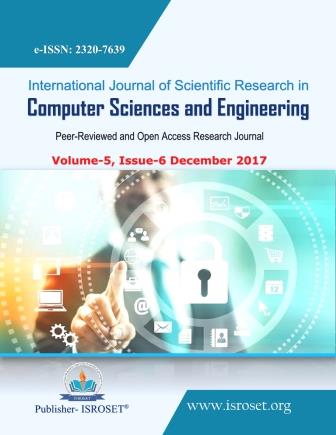Fuzzy Association Rule Mining- A Survey
Keywords:
Video watermarking, feature selection, rough set theory, motion vectors, particle swarm optimizationAbstract
The World Wide Web has become a huge repository of the hypertexts and documents. The rapid growth of web logs and texts has gained a lot of attention from the researchers for extracting the interesting rule for designing of the web pages, drawing the customer preference, analysing the customer behaviour and decision making for serving the organizations with better services. Such decisions are made by analysing different web parameters such as the server log, registration information, access time, session period, page hits and other relative information left by user. This paper presents a survey on various techniques such as fuzzy logic and rule mining for finding the customer behaviour that helps in better decision making and enhancing the performance of the system.
References
Ujwala Patil and Sachin Pardeshi, “A Survey on User Future Request Prediction: Web Usage Mining”, International Journal of Emerging Technology and Advanced Engineering, Vol. 2, Issue 3, pp. 121-124, 2012.
Rajni Pamnani and Pramila Chawan, “Web Usage Mining: A Research Area in Web Mining”, pp. 2-3, 2012.
Kavita Sharma, Gulshan Shrivastava and Vikas Kumar, “Web Mining: Today and Tomorrow”, 3rd International Conference on Electronics Computer Technology, Vol. 1, pp. 399-403, 2011.
Jiawei Han, Jian Pei, Yiwen Yin, “Mining Frequent Patterns without Candidate Generation”, In Proceedings of the ACM-SIGMOD International Conference on Management of Data, pp. 1–12, 2000.
Stephen G. Matthews, Mario A. Gongora, Adrian A. Hopgood and Samad Ahmadi, “Web usage mining with evolutionary extraction of temporal fuzzy association rules”, Knowledge-Based Systems, Vol.54, pp. 66-72, 2013.
Binu Thomas and G. Raju, “A Novel Web Classification Algorithm Using Fuzzy Weighted Association Rules”, Hindawi Publishing Corporation, Vol.2013, pp. 1-10, 2013.
Victoria Nebot and Rafael Berlanga, “Finding association rules in semantic web data”, Knowledge-Based Systems, Vol.25, pp. 51-62, 2012.
S. Veeramalai, N. Jaisankar and A. Kannan, “Efficient Web Log Mining Using Enhanced Apriori Algorithm with Hash Tree and Fuzzy”, International Journal of Computer Science & Information Technology, Vol.2, No. 4, pp. 60-74, 2010.
Liu Jian and Wang Yan-Qing, “Web Log Data Mining Based on Association Rule”, Eighth International Conference on Fuzzy Systems and Knowledge Discovery (FSKD), Vol.11, pp. 1855-1859, 2011.
Tarek F. Gharib, Hamed Nassar, Mohamed Taha and Ajith Abraham, “An efficient algorithm for incremental mining of temporal association rules”, Data and Knowledge Engineering, Vol.69, pp. 800-815, 2010.
Ujwala Manoj Patil and Prof. Dr. J. B. Patil, “MINING FUZZY ASSOCIATION RULES FROM WEB USAGE QUANTITATIVE DATA” CSITY, SIGPRO, AIFZ, NWCOM, DTMN, GRAPHHOC, pp. 89–98, 2016.
R GEETHARAMANI, P REVATHY and SHOMONA G JACOB, “Prediction of users webpage access behaviour using association rule mining” Sadhana, Vol. 40, part 8, pp. 2353–2365, 2015.
Richa Soni and Gurpreet Kaur, “ Web Usage Mining: Personalization of Web Usage Data”, International Journal of Advanced Research in Computer and Communication Engineering, Vol. 3, Issue 2, 2014
Chhavi Rana, “A Study of Web Usage Mining Research Tools”, Int. J. Advanced Networking and Applications, Vol. 03 Issue:06, pp. 1422-1429, 2012.
Stephen G. Matthews, GONGORA, Mario A., HOPGOOD, Adrian A. and AHMADI, Samad, “Temporal Fuzzy Association Rule Mining with 2-tuple Linguistic Representation”, IEEE International Conference on Fuzzy Systems, pp 1-8, 2012.
Downloads
Published
How to Cite
Issue
Section
License

This work is licensed under a Creative Commons Attribution 4.0 International License.
Authors contributing to this journal agree to publish their articles under the Creative Commons Attribution 4.0 International License, allowing third parties to share their work (copy, distribute, transmit) and to adapt it, under the condition that the authors are given credit and that in the event of reuse or distribution, the terms of this license are made clear.







